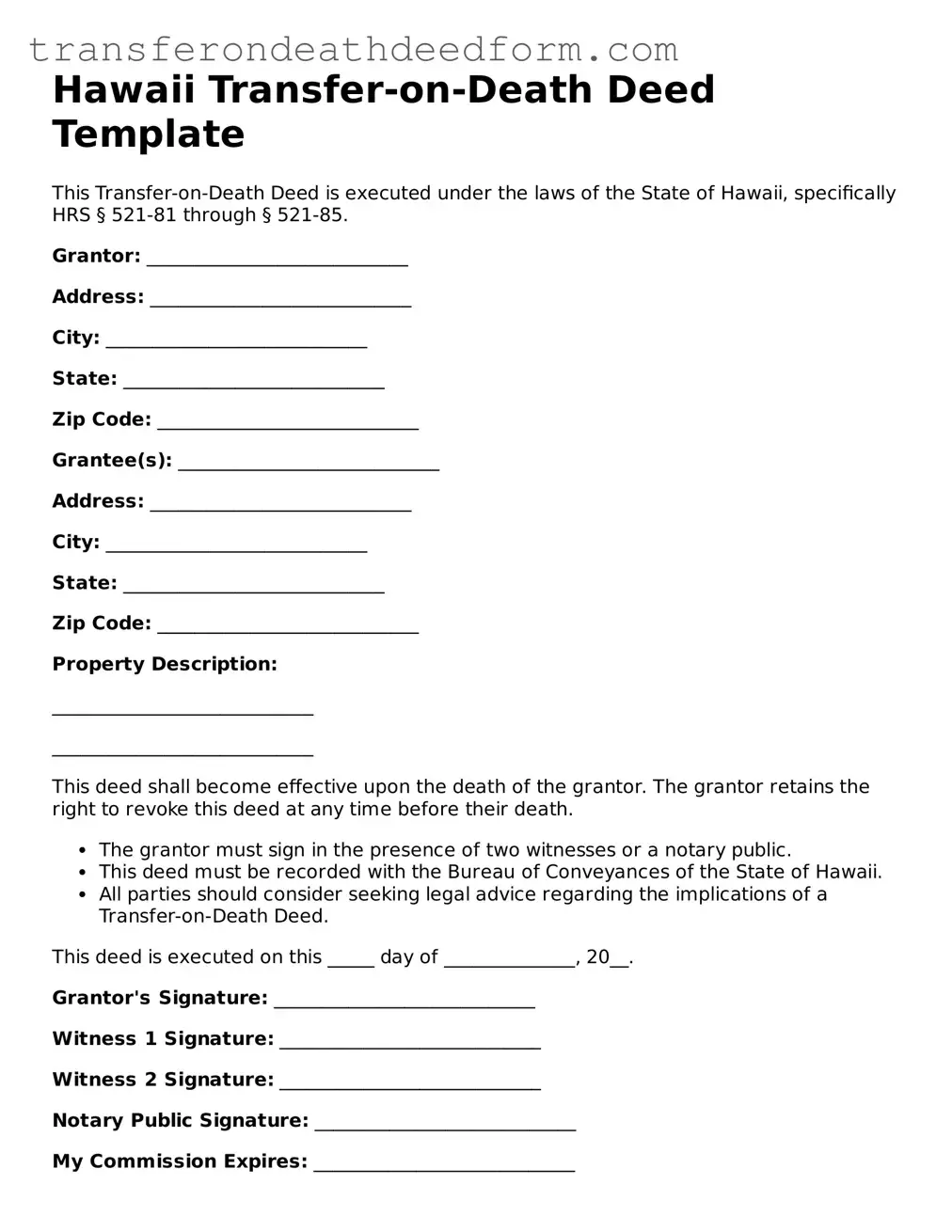Hawaii Transfer-on-Death Deed Template
This Transfer-on-Death Deed is executed under the laws of the State of Hawaii, specifically HRS § 521-81 through § 521-85.
Grantor: ____________________________
Address: ____________________________
City: ____________________________
State: ____________________________
Zip Code: ____________________________
Grantee(s): ____________________________
Address: ____________________________
City: ____________________________
State: ____________________________
Zip Code: ____________________________
Property Description:
____________________________
____________________________
This deed shall become effective upon the death of the grantor. The grantor retains the right to revoke this deed at any time before their death.
- The grantor must sign in the presence of two witnesses or a notary public.
- This deed must be recorded with the Bureau of Conveyances of the State of Hawaii.
- All parties should consider seeking legal advice regarding the implications of a Transfer-on-Death Deed.
This deed is executed on this _____ day of ______________, 20__.
Grantor's Signature: ____________________________
Witness 1 Signature: ____________________________
Witness 2 Signature: ____________________________
Notary Public Signature: ____________________________
My Commission Expires: ____________________________
